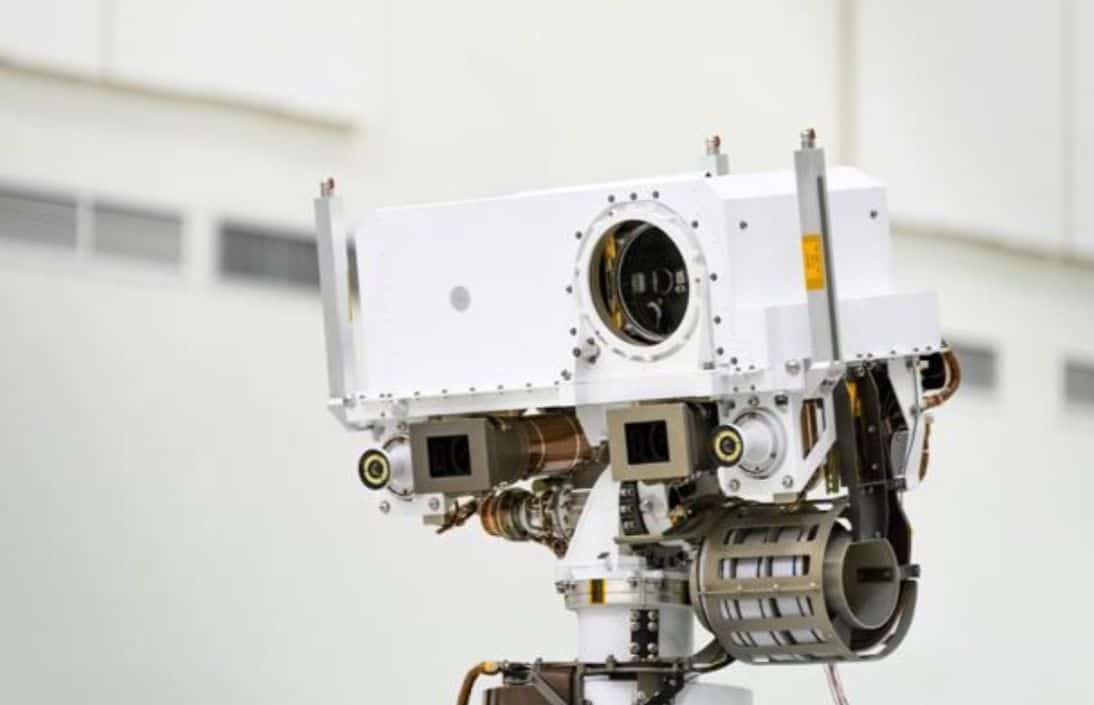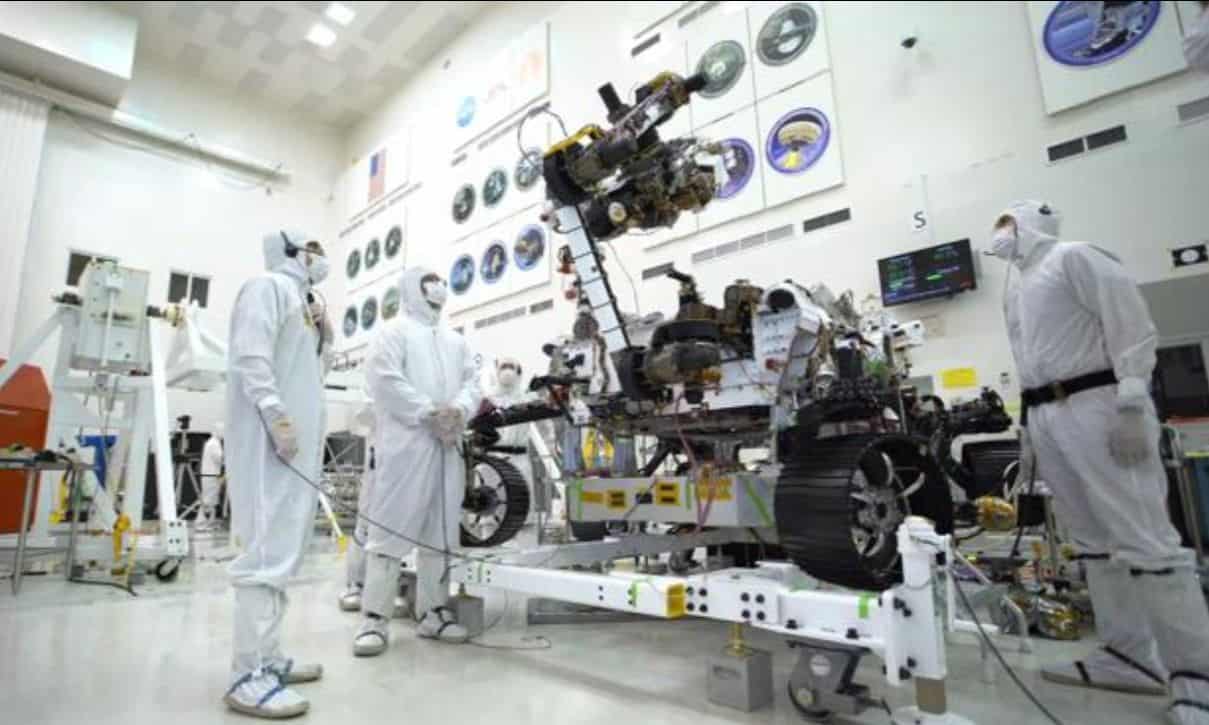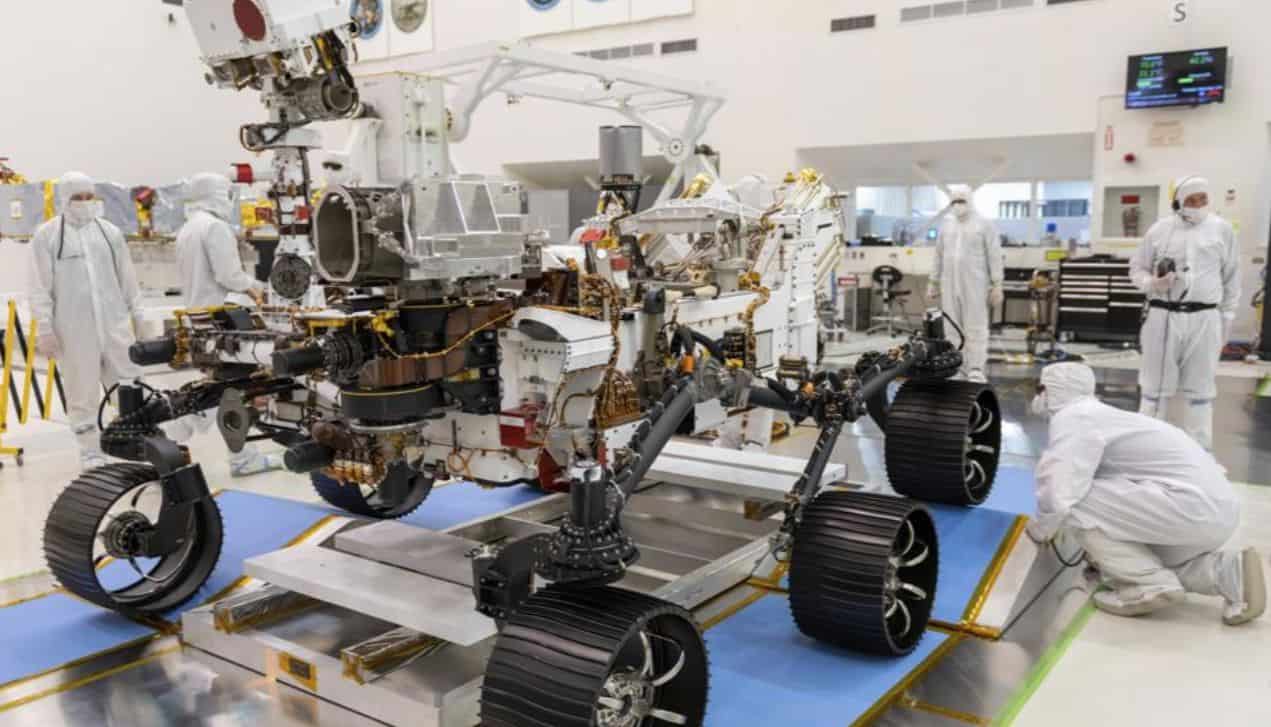NASA already has the green light for the launch on July 30 from the Kennedy Space Center in Cape Canaveral, Florida, Mars 2020, its most ambitious mission on our neighbouring planet. The sophisticated Perseverance rover is ready to look for traces of microbial life on the ground, which will help determine whether there was life on the red planet or if at least the conditions were given for it. But the project’s ultimate goal is even more daring: to store data and return it to Earth for analysis in order to explore the possibility of humans establishing a permanent settlement on Mars within just over a decade.
Last Wednesday, the last flight readiness review was approved. “We are prepared in all areas,” said Matt Wallace, deputy project for the mission at the U.S. space agency’s Jet Propulsion Laboratory (JPL) in California.
Ideal moment: The United Arab Emirates and China have sent missions to the planet this week
The time to travel to the planet more similar to ours among the eight that make up the Solar System is ideal. During these days, Mars is at its closest point to Earth, some 55 billion kilometres, which significantly reduces the amount of energy needed to undertake the interplanetary path. It happens every 26 months. This has been used by two other countries to send missions in the last ten days, the first in an Arab country (United Arab Emirates) and China. All of them are scheduled to arrive on Mars in February 2021 after a six to seven-month journey.
The first challenge is to lift the flight and put the probe into orbit, something the UAE and China have already achieved this week
The first challenge is to lift the flight and put the probe into orbit, something the UAE and China have already achieved this week. It is assumed that the United States will do so, too. The big challenge is the landing of the scout vehicle, a manoeuvre in which two-thirds of attempts have failed.
The United States has already successfully sent four rovers to the planet, but “Mars is a difficult customer and nothing to be taken for granted,” Wallace said this week.
The last to do so was Curiosity in August 2012. Later, in November 2018, the Insight space probe was martyred. Both projects are still active.
Perseverance is the largest and heaviest vehicle that has ever been sent to Mars. It is based on its predecessor. Almost 85% of its mass is “legacy hardware” from Curiosity. “It is a great advantage,” Jim Watzin, director of NASA’s Mars exploration program, acknowledged in a statement. “It saves us money, time and, above all, reduces risk.”

Like Curiosity, Perseverance has a rectangular body, six wheels, an arm and a hand, a drill to take rock samples, a microphone that will allow to capture and transmit to Earth for the first time the sound of Mars and a set of state-of-the-art cameras and instruments designed to fulfil its mission: to collect samples of the Martian soil that will be collected on a future mission and sent back to Earth (scientists do not anticipate that will happen until at least 2031) and obtain data for future human exploration. This mission is, therefore, the first stage of a round trip to Mars.
Improvements to the new rover include a new landing technology called terrain navigation
Unpublished images: Perseverance advanced cameras will capture landing time for the first time
Among the improvements of the new rover is precisely a new landing technology called terrain navigation, which will help the vehicle avoid dangers autonomously. The system uses preloaded terrain maps that will allow corrections to be made on the fly in the deceleration and descent process.
The advanced Perseverance cameras will film for the first time the opening of the parachute and the slow descent – between six and seven minutes – of the spacecraft, promising not only stunning images but also valuable scientific data about the planet’s atmosphere.
The landing site has been carefully selected from several locations that have already been explored in previous missions. After much discussion, the scientific team settled on Jezero Crater, an ancient geologically rich lake bed with great potential to find signs of past microbial life. It is 28 miles (45 km) wide and lies on the western edge of the Isidis Planitia plain, a giant basin just north of the Martian equator formed long ago when a space rock hit the surface. The structure of the river delta suggests that there was water in the area at least twice sometime between 3 and 4 billion years ago.

In case the rocket could not take off next Thursday for any weather issues, the launch window would run until mid-August, but it could not be delayed much longer because Earth and Mars would no longer be in the right position for the launch.
